Hydraulics Pneumatics Symbols
Hydraulics pneumatics symbols play very important role in design and implementation of the systems. These symbols designate the components and way they should be interconnected. WIthout hydraulics pneumatics symbols it would have very difficult to represent and express a hydraulic circuit. Hydraulics pneumatic symbols are grouped in different groups as Energy conversion elements, Hydraulics cylinders, Energy transmitting elements,Fluid storage elements, Flow control valves, Direction control valves, check valves, Fluid conditioning elements, pressure control valve and accesories.
A family of various graphical symbols have beed developed to represent the different hydraulic components and systems. Two main symbol sets ANSI and ISo are used. But we follow the universally accepted ISO symbols.
Following table depicts the various hydraulics pneumatics symbols which are ISO symbols used worldwide.
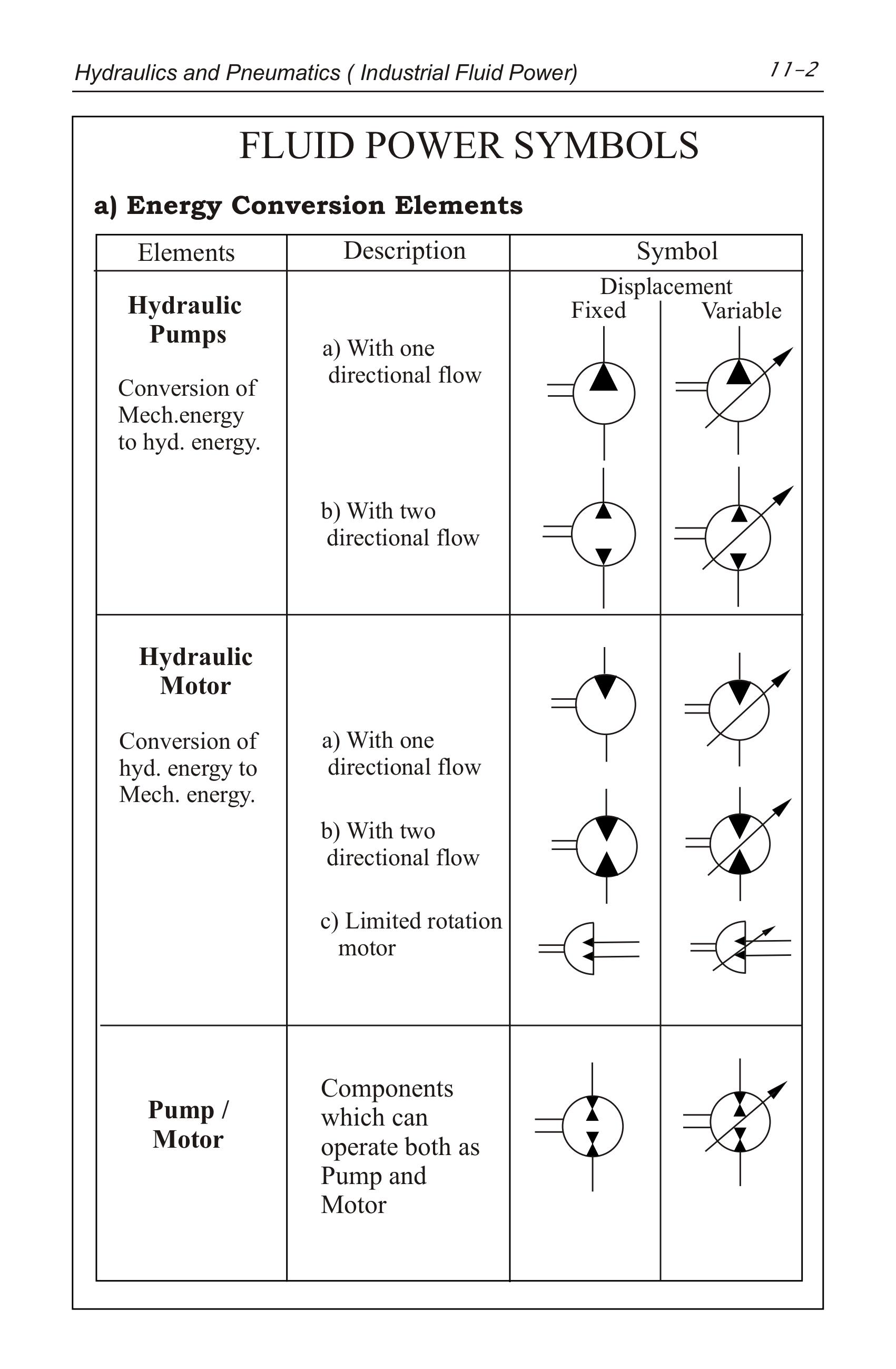
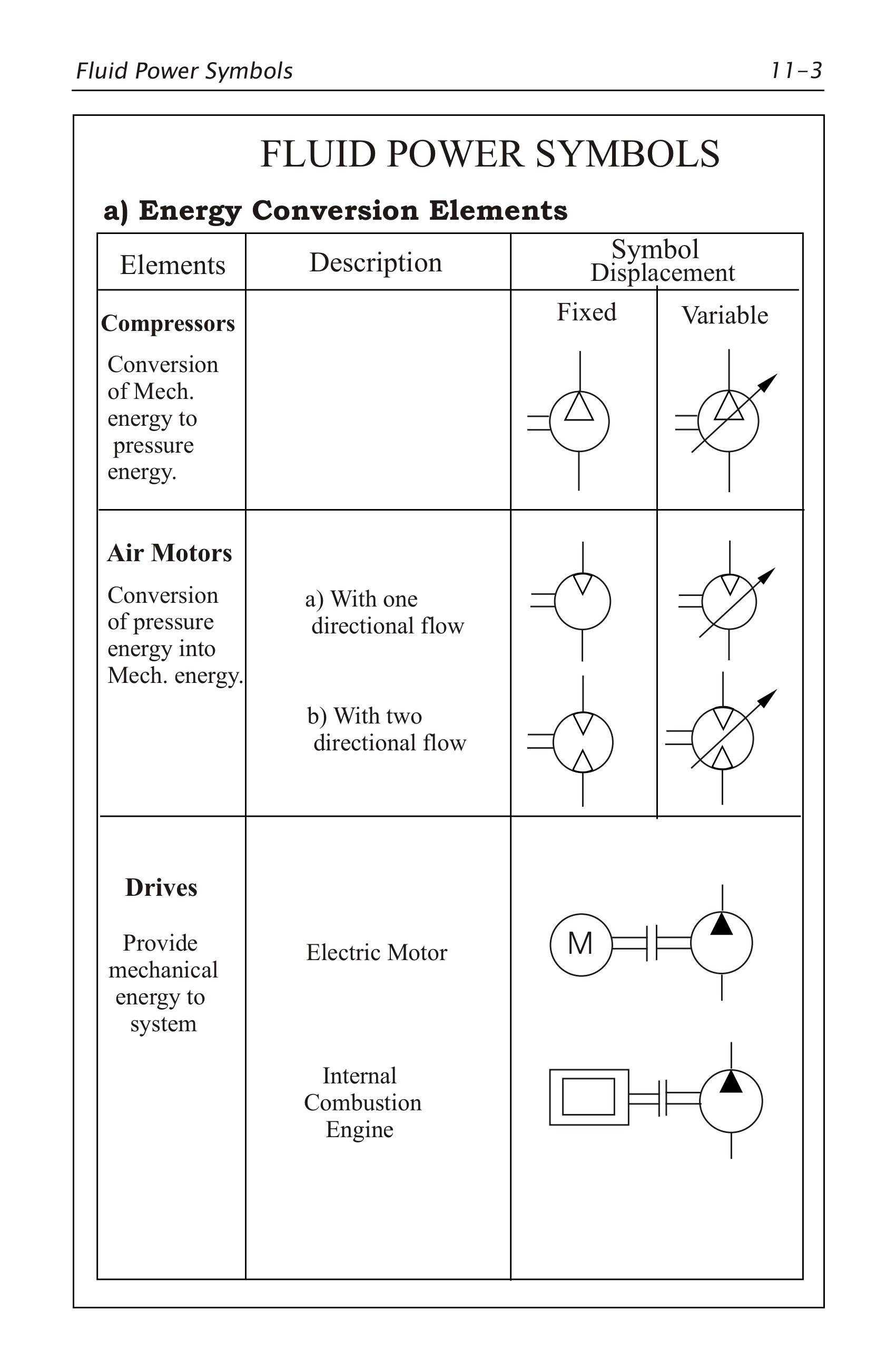
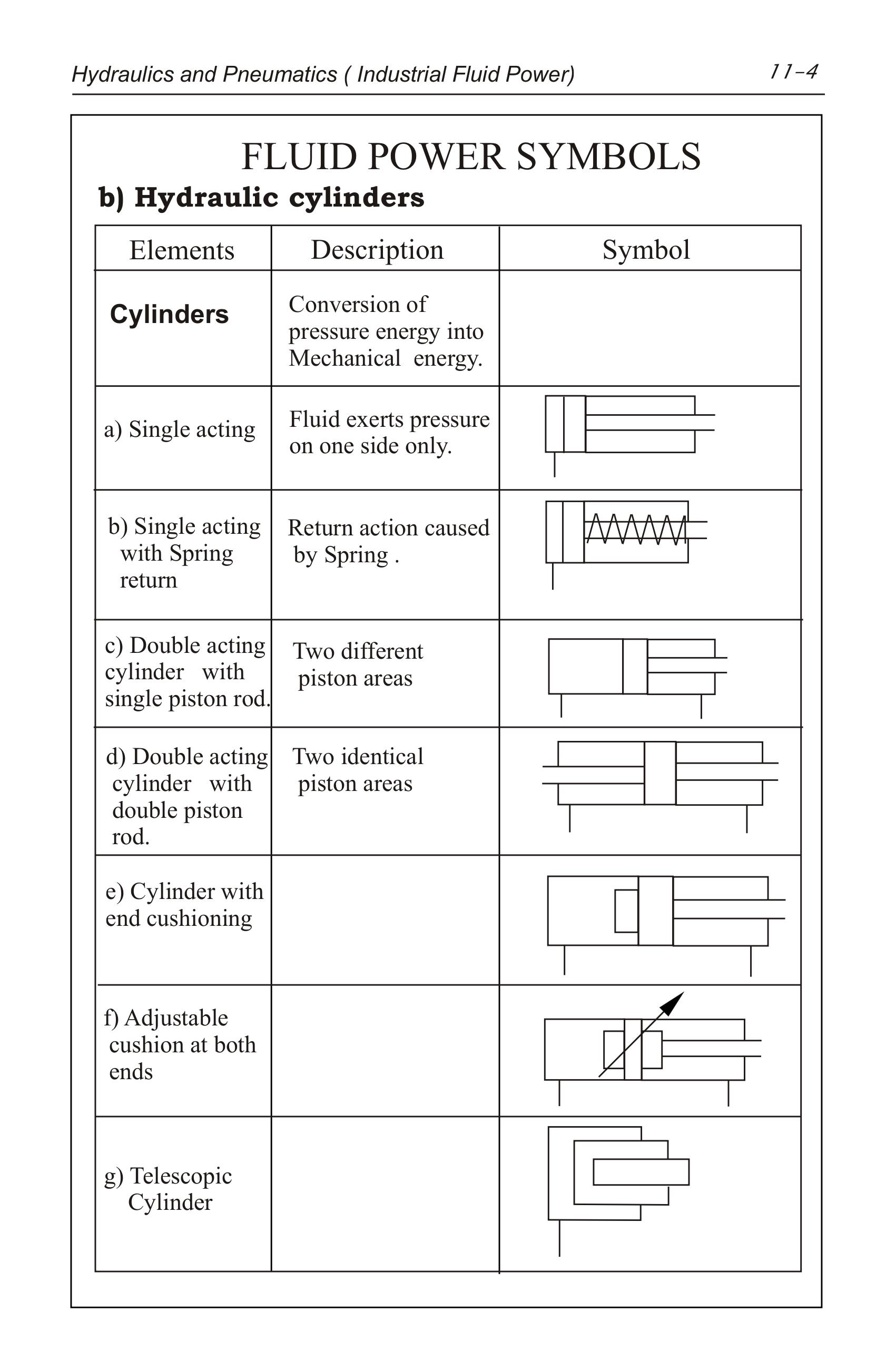
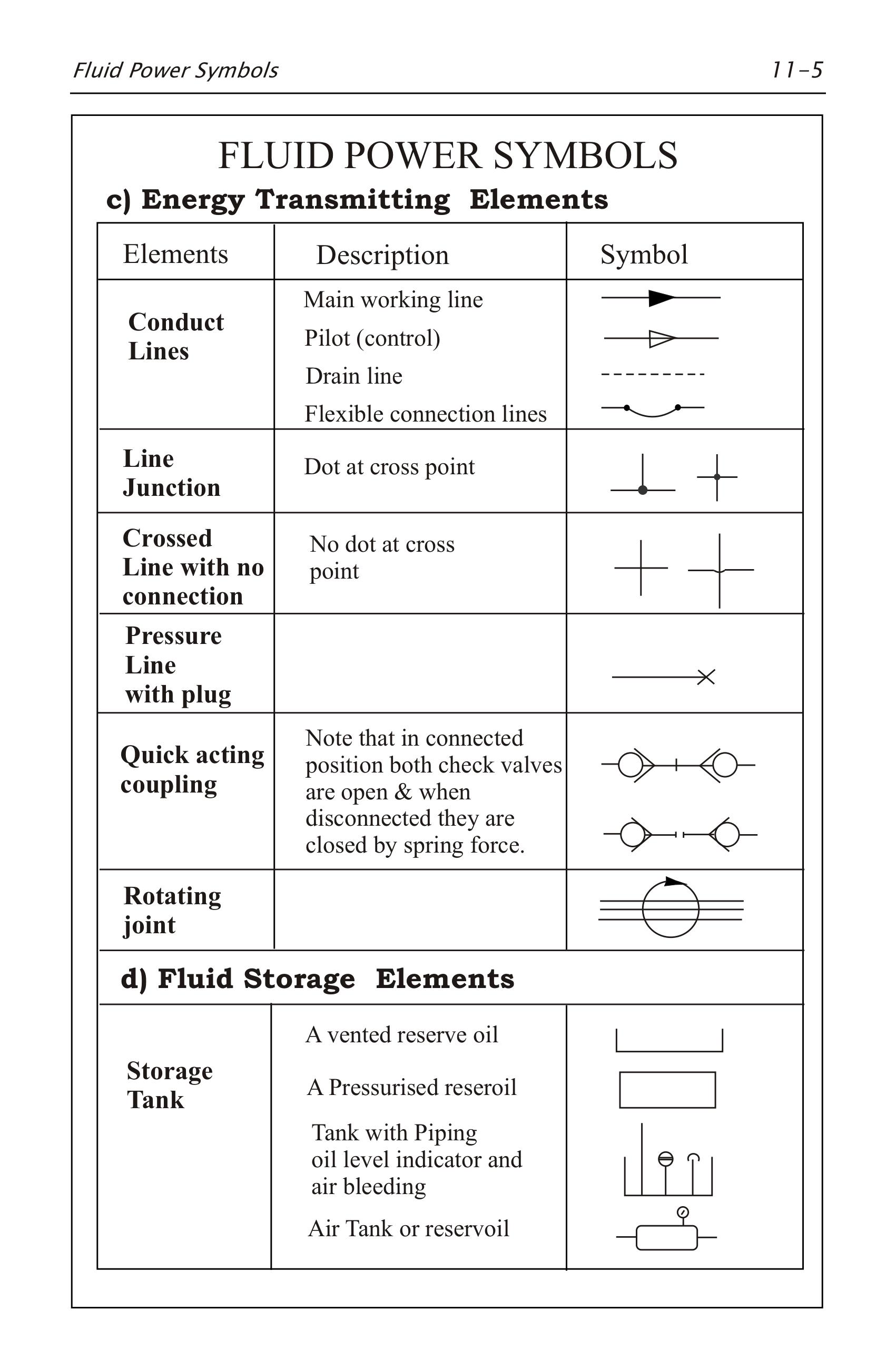
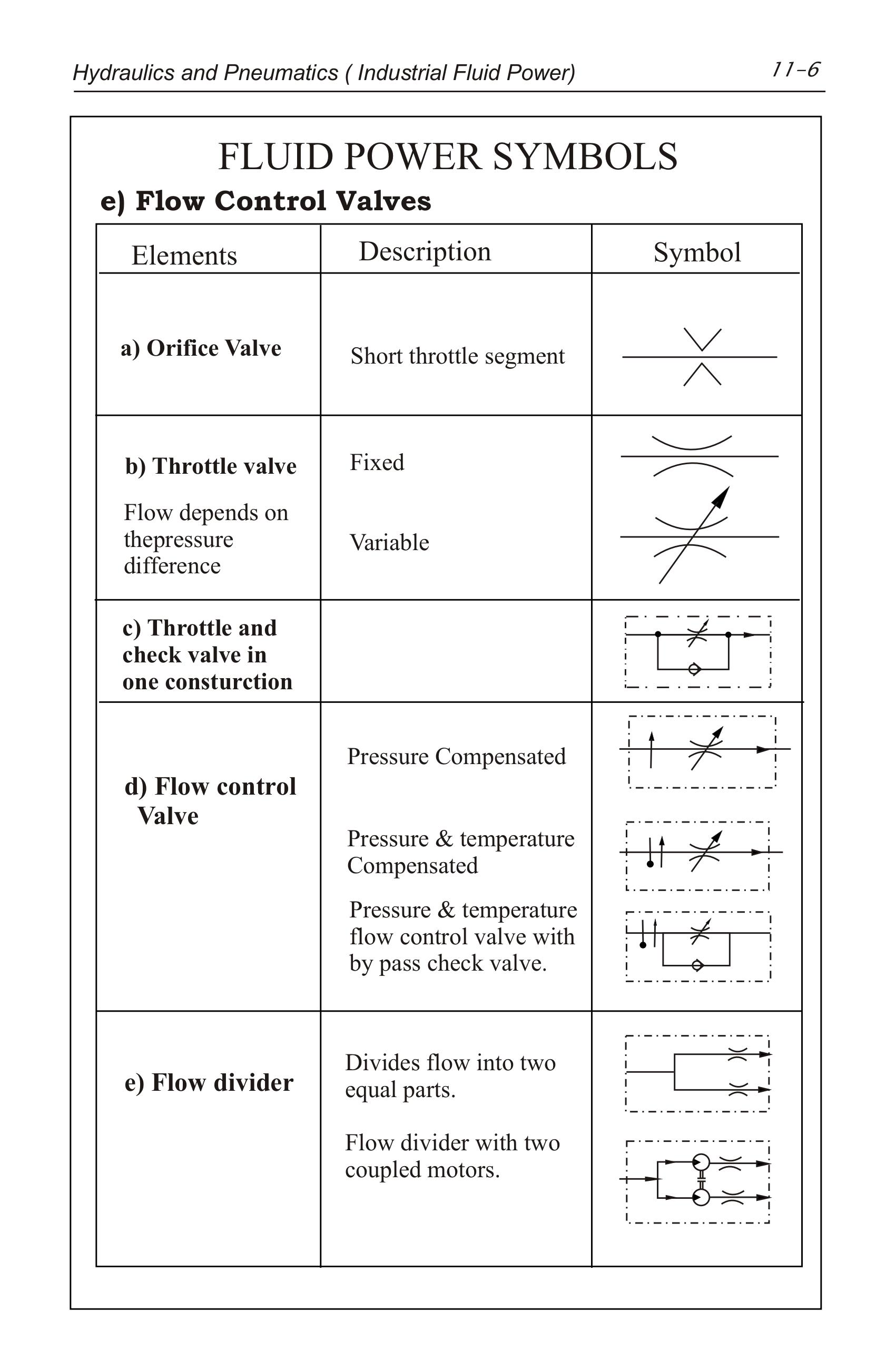
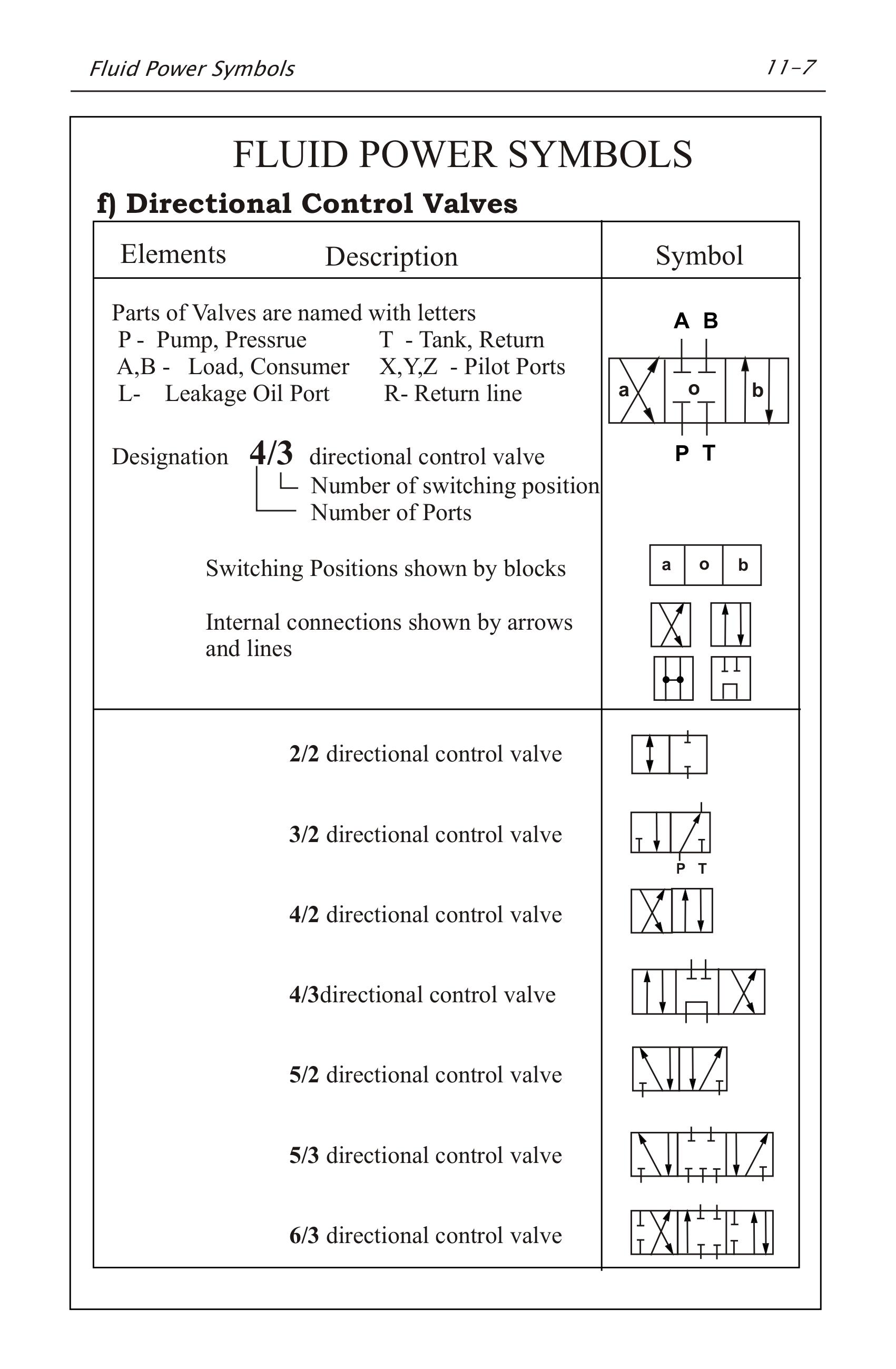

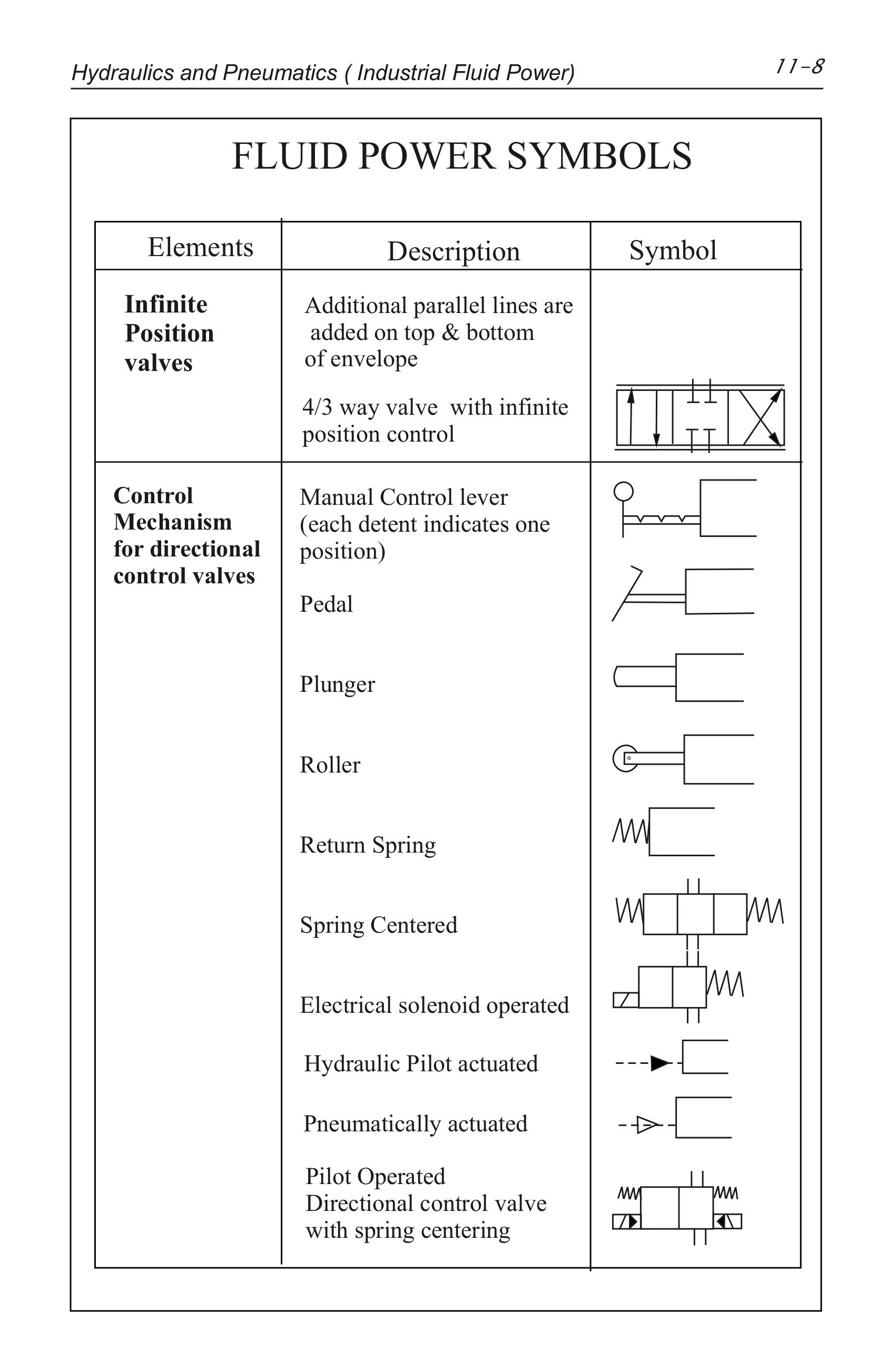
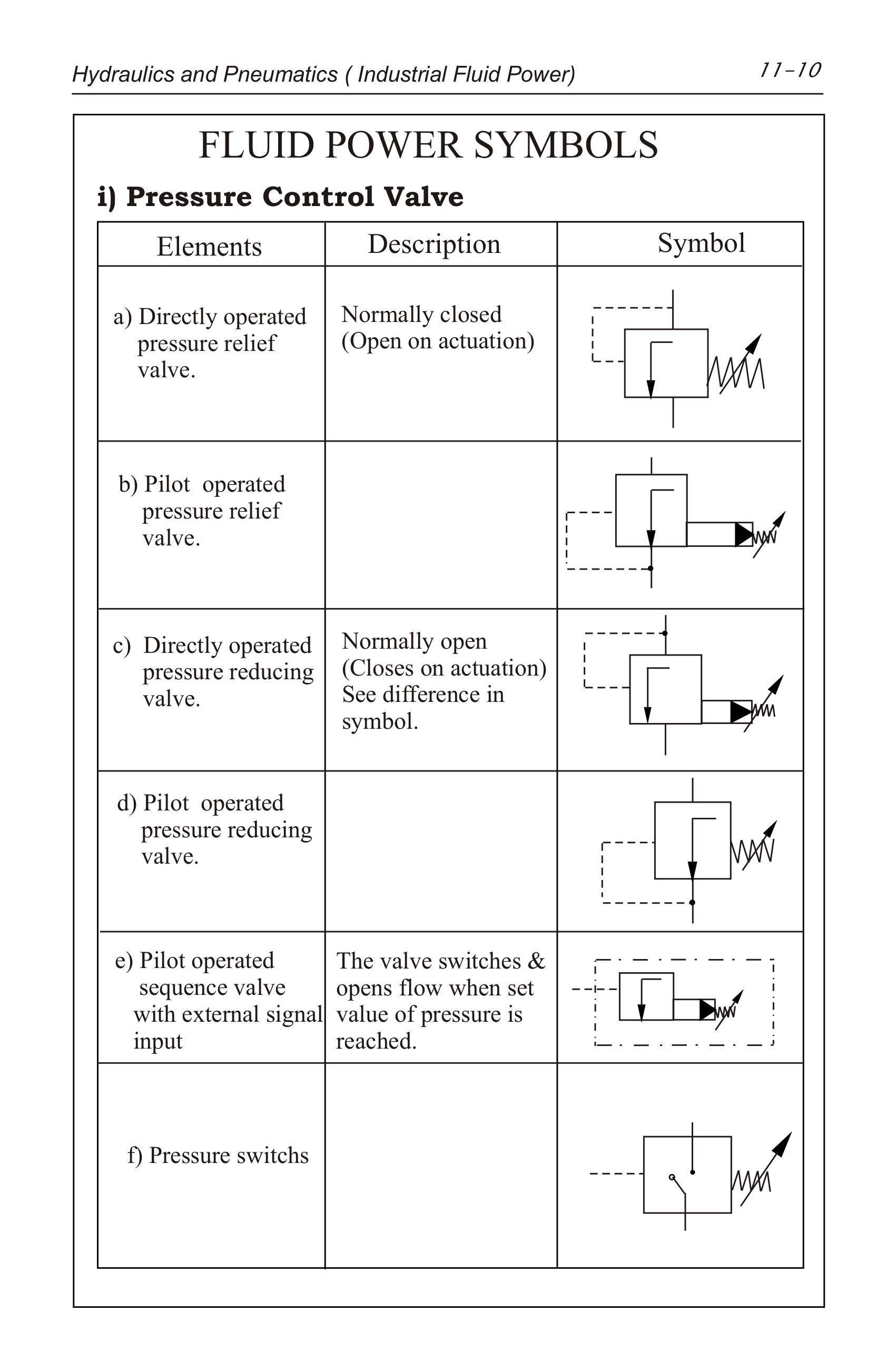
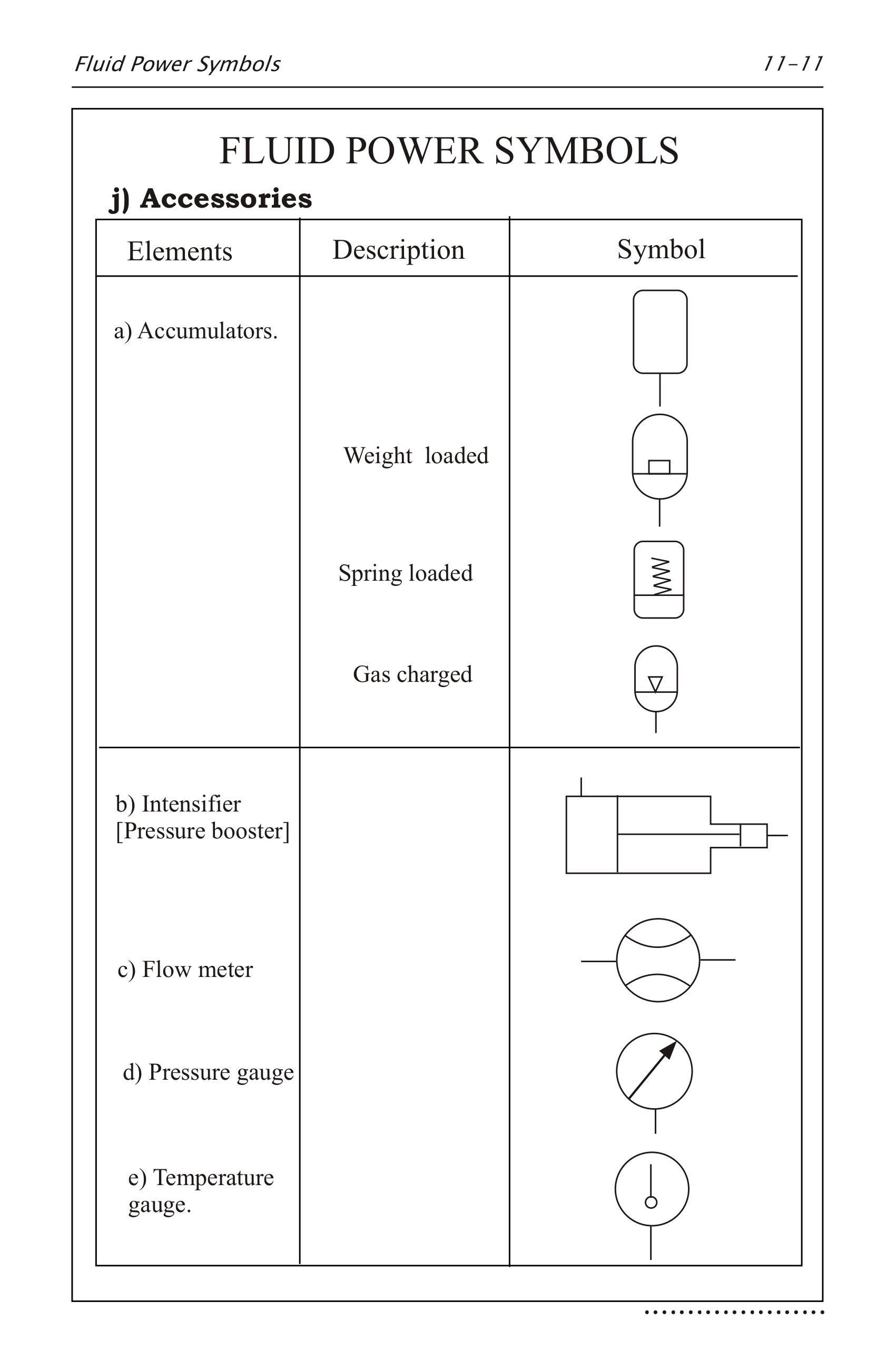
The above symbols are as per ISO. If there is no standard symbol for a component one must be made and clearly mentioned. The above diagrams cover both hydraulic and pneumatic symbols. A circuit diagram is the combined diagram showing components and their interconnections.
Hazard and safety in hydraulics
HAZARDS:
Hydraulic equipments and systems are
designed to accomplish work using confined liquid pressure to produce
a greater mechanical force. The operators/ maintenance crews are
subjected to hazards from high pressure liquids and large mechanical
forces. Hydraulic systems store fluid under high pressure. The
workmen are exposed to following hazards:
-
burns from hot, high-pressure fluid
-
Injection of fluid into the skin
-
Fire Hazards
-
bruises, cuts or abrasions from
flailing hydraulic lines
-
Injury of people due to unexpected
movement of equipment.
-
During maintenance of equipment and
their parts.
-
Injury due to sudden release of
residual pressurized oil.
-
Slippage due to oily floor area.
SAFETY
-
Positive isolation procedure to be
followed before start of any hydraulic work. -
Depressurize the system before start
of work. Shut down/ Local Isolation may be taken, if required. -
Never begin work on a
hydraulic/pneumatic system until fully trained. -
Never begin work on a
hydraulic/pneumatic system without using a risk assessment. -
Carefully review the manuals on
equipments before beginning work. Ask questions about anything you
do not fully understand. -
Use all required safety Equipments
like gloves,masks etc. -
Never try to repair a part without
having full knowledge about it. -
Each hydraulic system must have a
documented procedure of de-energizing and load locking. This should
be known to all maintenance personnel. -
Document and practice
de-pressurizing procedure in each of the circuit. -
While testing the system after
repair never stand close to the unit. Any component, pipe, hose,
fitting may fail. -
Tightening of Joints should be done
in depressurized condition.
Link to main chapter
http://www.mechdiploma.com/introduction-hydraulics-and-pneumatics
- Log in to post comments
